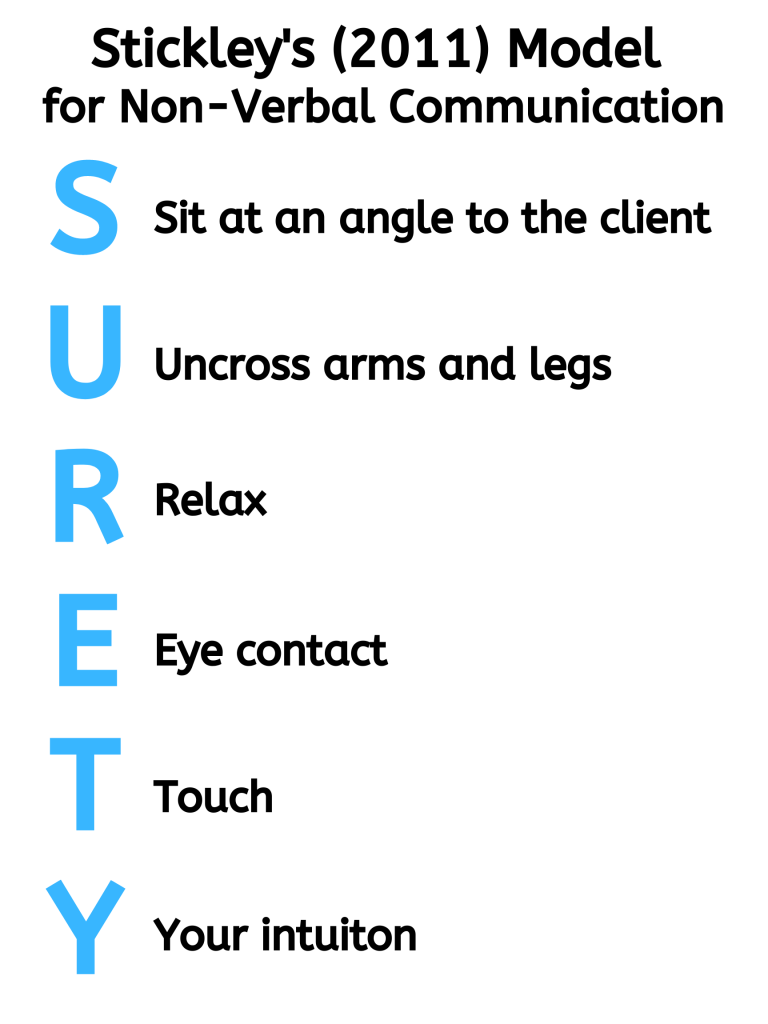Non-Verbal Communication Strategies
Non-verbal communication strategies are ways you communicate without speaking, for example through facial expressions, hand gestures, eye contact, and body language. See Figure 2.5.

In many situations, much of your communication occurs through non-verbal behaviours. Non-verbal communication can be a useful strategy for communicating emotions like empathy, compassion, and acceptance. It is often how nurses respond, rather than what they say, that leaves a lasting impression on clients, so it is important to be aware of how you communicate using non-verbal behaviours.
Non-verbal behaviours must align with your verbal behaviours so that clients clearly understand what you are saying. For example, it would be confusing for the client if you had a somber tone of voice, distancing posture, and avoided eye contact while attempting to maintain a therapeutic relationship with the client.
Try to ensure positioning where you are both at the same vertical level and a slight angle towards one another. This positioning conveys an open and non-confrontational and non-authoritative space. Whenever possible, avoid standing over the client if they are sitting or lying in bed. It is better to sit down, which also conveys that you have time to listen to them.
There are many models to inform your non-verbal communication. One helpful model is called SURETY (Stickley, 2011) reflected as a modified version in Figure 2.6:

Points of Consideration
Physical touch
Touch can be therapeutic with clients when used appropriately. It can convey empathy and compassion. You should strike a balance about when it is therapeutically appropriate and when it is an intrusion for clients. It will take practice to learn when touch is appropriate.

